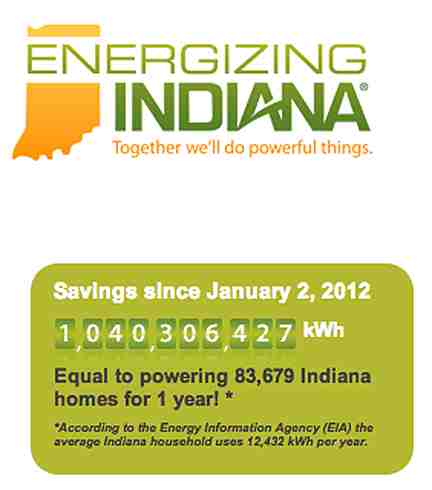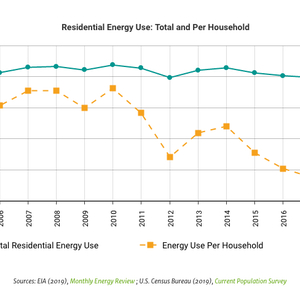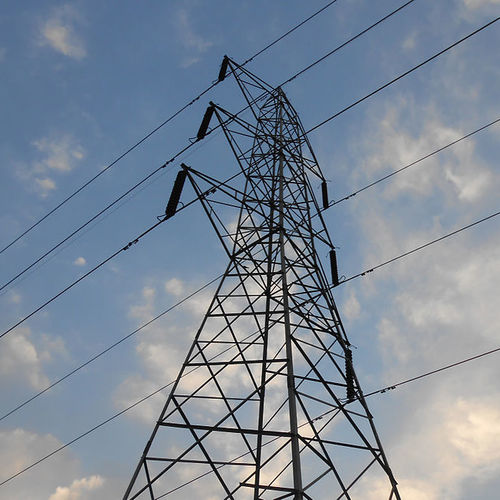
Energizing Indiana has saved more than 1 billion kilowatt hours of energy in the last two years, but that apparently wasn’t enough for Indiana state lawmakers to keep the energy-efficiency program in business.
Lawmakers voted last week to end the program by the end of the year and Gov. Mike Pence, a Republican, allowed the bill to take effect without his signature.
“I could not sign this bill because it does away with a worthwhile energy efficiency program,” Pence said in a statement circulated by The Associated Press. “I could not veto this bill because doing so would increase the cost of utilities for Hoosier ratepayers and make Indiana less competitive by denying relief to large electricity consumers.”
The governor said he would ask the Indiana Utility Regulatory Commission to start work right away on a new energy-efficiency program that would allow big power users to opt out, and that the legislation would go to lawmakers next year.
According to the AP, the Indiana representative of the Sierra Club’s Beyond Coal Campaign said Indiana is now the first state in the country to “roll back its energy savings goals.”
Comprehensive effort to save energy
Energizing Indiana describes itself as a program offering “comprehensive energy efficiency programs that bring savings to communities across the state.” It includes programs for homes, schools, and businesses.
Efforts included weatherization for low-income families, discounts on Energy Star lighting, home energy assessments to help homeowners identify ways they could reduce energy use, and a commercial and industrial rebate program that helped businesses install energy-efficient equipment and make upgrades that reduced energy consumption.
The effort to end the program was supported by many manufacturers and utilities and opposed by environmental and consumer groups, The Indy Star reported.
Move blamed on utility lobbyists
Energizing Indiana didn’t respond to an e-mail asking for more information, but Kerwin Olson, the executive director of the Citizens Action Coalition, said the program spent roughly $130 million in the first two years of operation. Ratepayers foot the bill.
Olson said industrial customers wanted to avoid paying for the program.
“The whole nuts and bolts of it is that utility demand is decreasing significantly,” he said. “Indiana utilities have tons of surplus capacity and utility companies have wanted to kill these programs for a while, they just didn’t know how to do it. They had an opportunity this session and they took advantage of it.
“What they want to do is create kilowatt hour sales and the way you increase demand is to eliminate demand response programs. So that’s what they did.”
Olson said the legislation began as an attempt to add an opt-out clause for industrial customers as a way of lowering their energy costs. The bill was amended to completely scuttle the program only at the last minute. The rewrite “blind-sided” potential opponents and wasn’t debated publicly.
“The Indiana State House is controlled by Indiana lobbying groups,” he said. “Those guys call the shots.”
Ohio measure would freeze energy mandates
Next door in Ohio, Senate Republican leaders have introduced a measure that would freeze energy efficiency and renewable energy mandates at this year’s level, the website UtilityDive.com reports.
In addition, the bill would create a committee assigned to find out how much these programs cost consumers, and would call for new rules by the end of the year requiring utilities to disclose the costs of the programs,
The report said the bill would also repeal current Ohio laws requiring utilities to reduce overall demand and peak demand by 22% by the year 2025.
Ohio utilities have been concerned about the cost of efficiency programs. According to an article posted at Cleveland.com, one Akron utility argues that required efficiency measures, which are paid for by rate increases, cost customers more than they save.
However, a report last week from the American Council for an Energy-Efficient Economy found that efficiency efforts cost about 3 cents per kilowatt hour, two or three times less than it costs to generate the same amount of electricity, UtilityDive.com said.
The report studied the cost of efficiency programs in 20 states and said that for every $1 invested in energy efficiency, consumers reaped benefits ranging from $1.24 to $4.
Weekly Newsletter
Get building science and energy efficiency advice, plus special offers, in your inbox.















3 Comments
Reverse progress?
Conservation and reducing energy waste is an issue that should be above political games. Is this really what the Republican Party wants to do? Let utility lobbyists kill a law that reduces energy waste, lowers energy bills for consumers and the poor, and increases utility company revenue or profits? To make a major change to a bill last-minute to sneak a bill through to avoid debate? Shameful and hurts the image of Republicans.
Don't blame the Republicans...
... or at least not all of the GOP, just certain individuals & factions. Mike Pence, (the governer of Indiana who refused to sign it, but didn't veto it either) is a member of the GOP, and promised to introduce alternative legislation to restore SOME sort of efficiency program by 2015.
It's not entirely clear why many Republicans allow the party to be wagged & whipped by the fossil-fuel and climate change denying wing of the party, but this shouldn't be a partisan-political thing. The problems are clear, even if the parties might disagree on the details of how to approach it. But there should be plenty of room to compromise, especially when the raw economics of conservation & efficiency are compelling enough that even the climate change issue could be set aside, focusing instead on what's in the best interest of the rate-payers & taxpayers.
The opportunities for job creation in efficiency industry is a large or larger than in the renewables industry. It's not entirely clear how much traction conservative organizations such as Red State Renewables (see: http://redstaterenewables.org/ ) has within the Indiana GOP, but there should be at least SOME members in the party other than Governor Pence who has a clue about this stuff. (Or maybe not- I haven't lived in Indiana in decades- can't say for sure.) They can't all be "You'll only take this incandescent bulb out of my scorched dead hand!" types, even if they don't believe in mandated efficiency standards as the right way to deal with it.
Indiana energy efficiency
While conservation should be above politics, it isn't. Reducing the total demand for electricity by 22% by 2025 would mean the closure of power plants and that won't happen without a fight from utility interests.
Log in or create an account to post a comment.
Sign up Log in